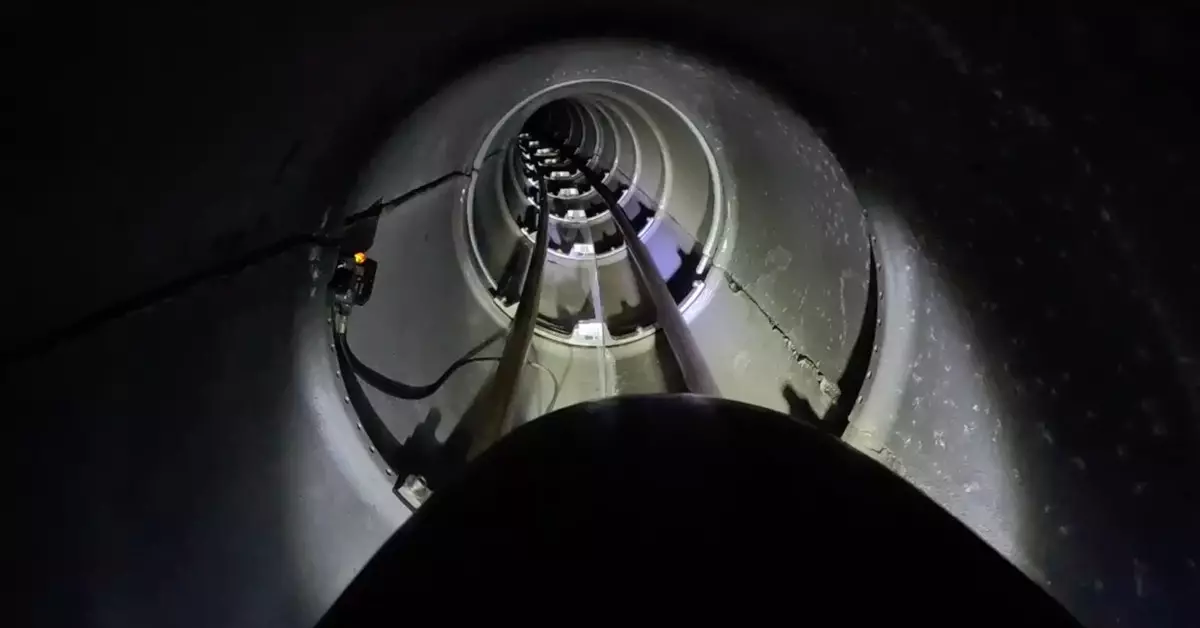The concept of the Hyperloop, a visionary transportation system first introduced by Elon Musk in 2013, promised a revolutionary leap in travel efficiency. Critics have often derided the idea as a mere pipedream, yet recent developments suggest that the Hyperloop is not as dead as once thought. Despite facing a plethora of challenges from funding to regulatory frameworks, the buzz surrounding the Hyperloop is beginning to flicker back to life, particularly with recent tests conducted in Switzerland.
At the heart of this renewed interest lies a 1/12th scale model operating on a circular testing track in Lausanne, Switzerland. This test track, while modest in size with a circumference of 125.6 meters, has produced significant results—most notably, a successful journey of 11.8 kilometers at a speed of 40.7 kilometers per hour. Although these figures may seem trivial when compared to Musk’s ambitious projections of 760 miles per hour, proponents claim that every incremental advancement translates to larger implications for full-scale designs.
The Swiss team behind this project, dubbed LIMITLESS (Linear Induction Motor Drive for Traction and Levitation in Sustainable Hyperloop Systems), is undertaking rigorous testing of propulsion systems, communications infrastructure, and energy management. Their claim that this small-scale testing could correlate to journeys of up to 141.6 kilometers at speeds approaching 488.2 kilometers per hour refreshingly hints that the concept might indeed translate into feasibility, invigorating conversations around its broader implications for transportation.
While the Swiss endeavor is commendable, the daunting reality of Hyperloop prospects remains. Many companies that were once the torchbearers of this innovation have crumbled under financial strains and logistical challenges. The hyperloop has frequently been criticized as a “utopian vision,” with skeptics labeling it as vaporware—an idea that blooms but never bears fruit. Past failures and setbacks send a cautionary signal that calls for tempered enthusiasm.
Moreover, the regulatory frameworks surrounding transportation technologies are notoriously convoluted. Infrastructural readiness and public acceptance continue to be formidable hurdles, necessitating not just engineering triumphs but also careful navigation of the political and social landscapes.
Despite such challenges, the Swiss team continues to press forward, insisting that future tests will help validate the technology further. Denis Tudor, CEO of Swisspod Technologies, stated that they aspire to test the first freight product soon. Setting their sights on building a larger test track in the United States, they demonstrate a resolve to not let previous failures overshadow their ambition, suggesting that they are positioning themselves to be leaders in this emerging field.
However, one must ponder the realism of these aspirations. As Musk shifts his focus from Hyperloop to high-profile political engagements, there lies a question about the future direction of his original vision. While the Boring Company continues its ventures in urban tunneling, Hyperloop remains languidly inactive on the global stage. The anticipated transformation of passenger travel has yet to materialize, leaving hope encased in uncertainty.
As we examine the latest developments revolving around Hyperloop, a mixture of optimism and skepticism pervades the discourse. While the efforts being spearheaded in Switzerland represent a noteworthy commitment to advancing the concept, the broader implications—financial sustainability, regulatory compliance, and technological viability—must not be overlooked.
Much like the original dream envisioned by Musk, the dream of the Hyperloop requires rigorous testing not just in engineering but within the realms of reality and practicality. The transportation world watches closely, awaiting not just proof of concept but tangible progress towards a future redefined by a new method of travel. Until then, the discussion will remain a tantalizing interplay of potential versus practicality.

